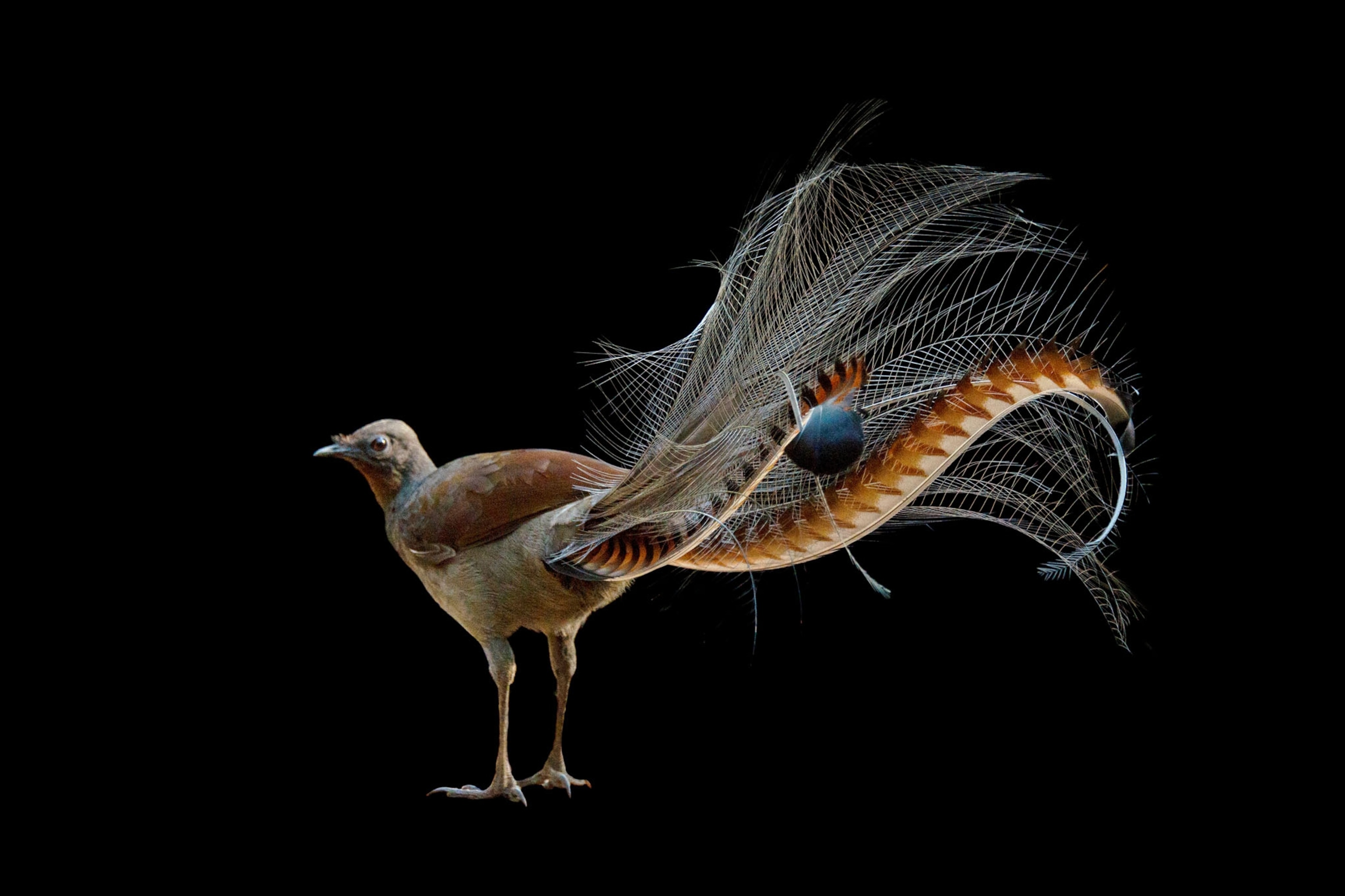
Upgraded toilet, natural repellents, and kicking up dirt
These novel phenomena include a space-age commode, a moth wing’s rain armor, an anti-predator paint job, and a bird that aerates soil.
Amenities, improved
In space, properly depositing human waste can be tricky. The lack of gravity can result in excretory anomalies, as ground control overheard during NASA’s 1969 Apollo 10 mission: “Give me a napkin quick,” Tom Stafford implored fellow astronauts. “There’s a turd floating through the air.” Now, for the first time since 1993, NASA has sent a brand-new, redesigned toilet to the International Space Station. Like its predecessor, the fancier throne uses suction to whisk away waste. Astronauts urinate into a handheld funnel and hose, and deposit the solid stuff exactly as you’d expect. But with more women visiting space, the new loo’s seat was fashioned with female anatomy in mind. It allows women to more easily multitask—or perform what NASA refers to as “dual ops”—and the seat plus handrails provides options on approach. “Some of the crew like to hover over the seat, some crew like to firmly dock,” says NASA’s Melissa McKinley. “The main thing is you want the [seat] shape to guide you into the proper location.” A bonus of the new design: Lifting the lid automatically turns on the toilet’s suction, the better to prevent rogue floaters. —Nadia Drake
(These new toilets could solve a global problem.)
Dig this: One more talent of lyrebirds
The superb lyrebird can crush scorpions with its rakelike feet. It can mimic sounds, from car alarms to human speech. And, a new study suggests, the multitalented bird turns over more soil than any other animal on land, even earthworms and gophers. Scouring the forest floor for insects, each bird can kick up a whopping 388 tons of leaf litter and earth a year across its range in eastern Australia. That beneficially aerates soils and reduces fire risk.
—Annie Roth


They’re Not Real Eyes, But ...
Big cats may give up the hunt if they think they’ve been spotted, so some Botswana ranchers try to deter the predators by painting eyes on their cattle’s bums. A four-year study found that cattle with this paint job were less likely to be killed by leopards and lions than those without it. —AR


Winging in the rain: The science
Though drops of rain might seem as big as bowling balls to a moth or butterfly, their wings have storm protection: a kind of raindrop-shattering armor. To study the “superhydrophobic” surface, Cornell University scientists took high-speed images of waterdrops striking moth wings. They saw that a waxy coating spreads out the waterdrop and then an array of tiny bumps punctures it, turning it into smaller beads that skitter away. Mimicking that defense system might produce better water-repellent substances, researchers say. —Maya Wei-Haas

You May Also Like
Go Further
Animals
- How scientists are piecing together a sperm whale ‘alphabet’How scientists are piecing together a sperm whale ‘alphabet’
- Orangutan seen using plants to heal wound for first timeOrangutan seen using plants to heal wound for first time
- What La Palma's 'lava tubes' tell us about life on other planetsWhat La Palma's 'lava tubes' tell us about life on other planets
- This fungus turns cicadas into zombies who procreate—then dieThis fungus turns cicadas into zombies who procreate—then die
Environment
- The northernmost flower living at the top of the worldThe northernmost flower living at the top of the world
- This floating flower is beautiful—but it's wreaking havoc on NigeriaThis floating flower is beautiful—but it's wreaking havoc on Nigeria
- What the Aral Sea might teach us about life after disasterWhat the Aral Sea might teach us about life after disaster
- What La Palma's 'lava tubes' tell us about life on other planetsWhat La Palma's 'lava tubes' tell us about life on other planets
- How fungi form ‘fairy rings’ and inspire superstitionsHow fungi form ‘fairy rings’ and inspire superstitions
- Your favorite foods may not taste the same in the future. Here's why.Your favorite foods may not taste the same in the future. Here's why.
History & Culture
- These were the real rules of courtship in the ‘Bridgerton’ eraThese were the real rules of courtship in the ‘Bridgerton’ era
- A short history of the Met Gala and its iconic looksA short history of the Met Gala and its iconic looks
Science
- Why trigger points cause so much pain—and how you can relieve itWhy trigger points cause so much pain—and how you can relieve it
- Why ovaries are so crucial to women’s health and longevityWhy ovaries are so crucial to women’s health and longevity
Travel
- What it's like trekking with the Bedouin on Egypt's Sinai TrailWhat it's like trekking with the Bedouin on Egypt's Sinai Trail




